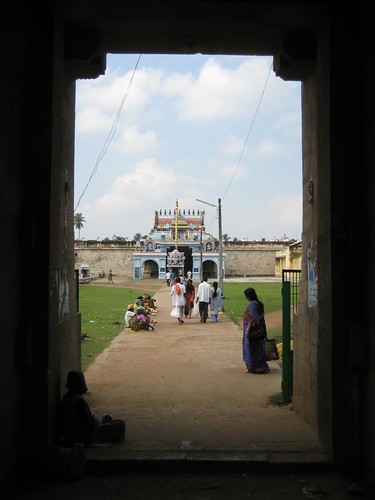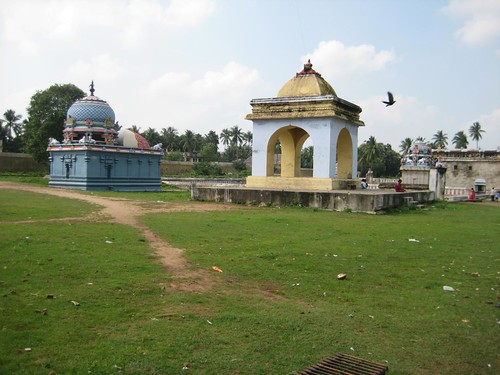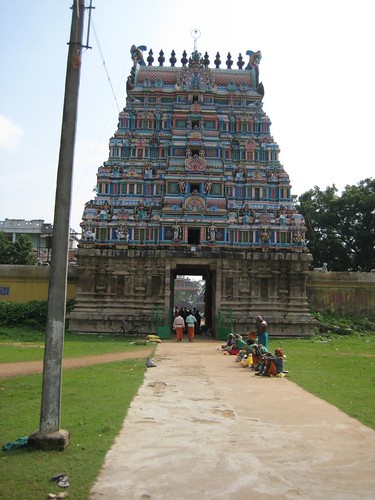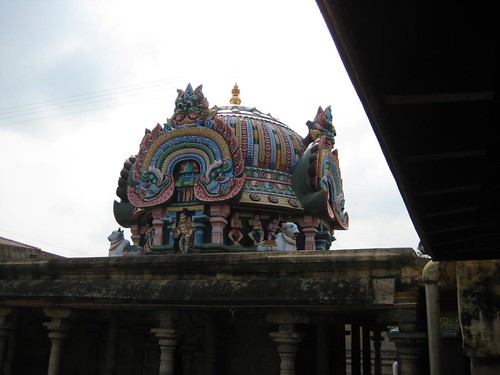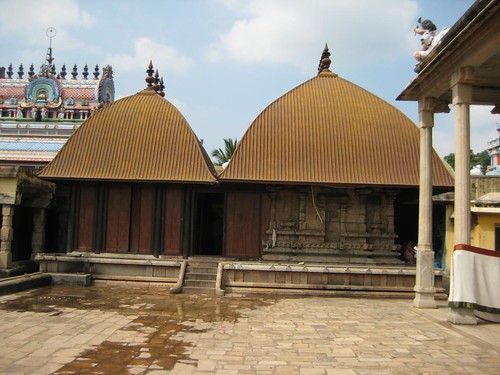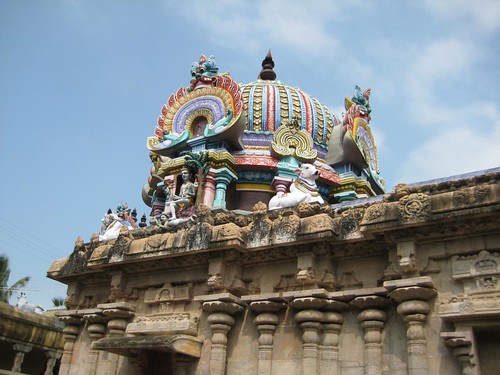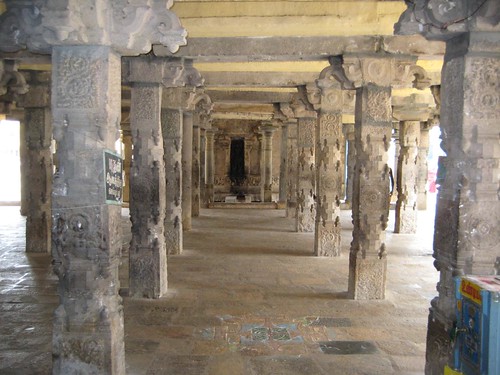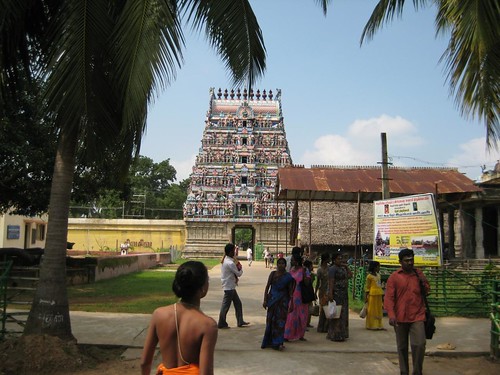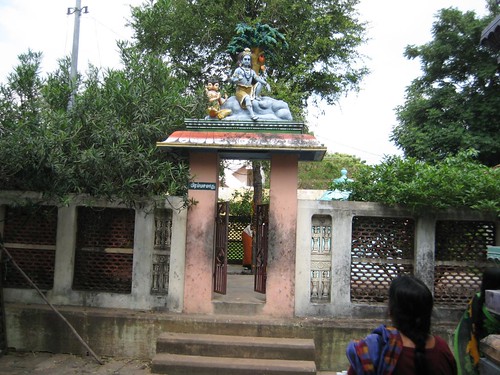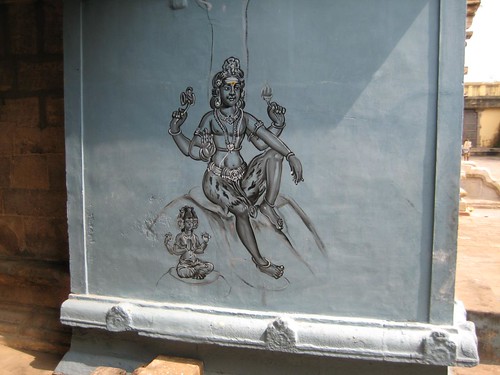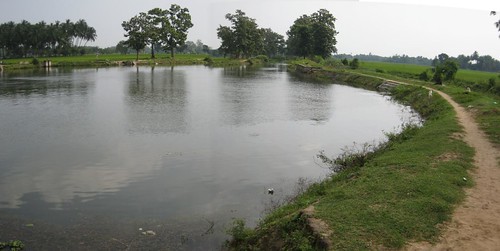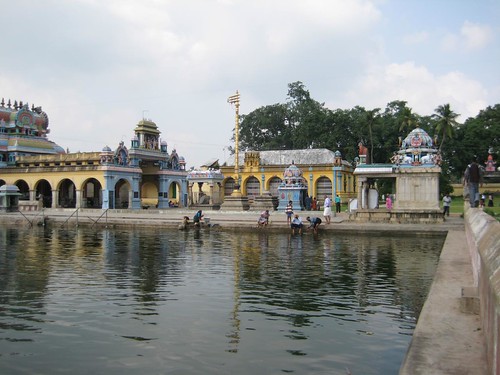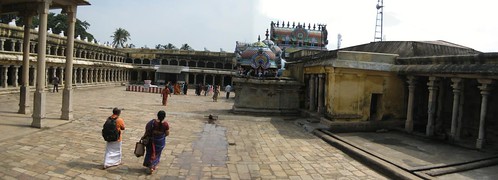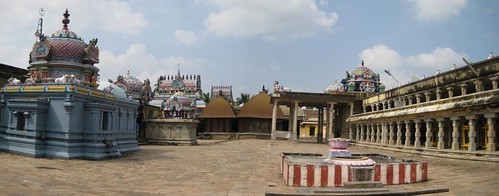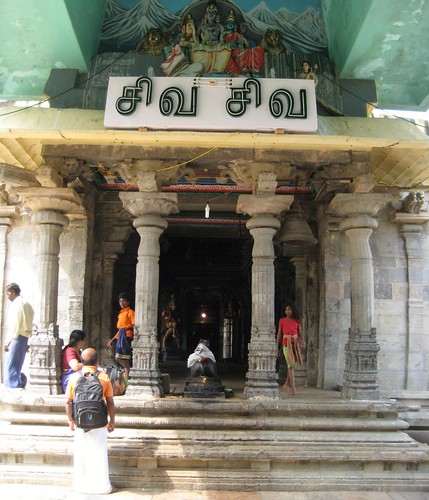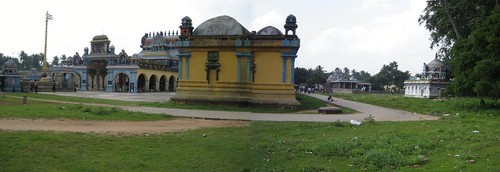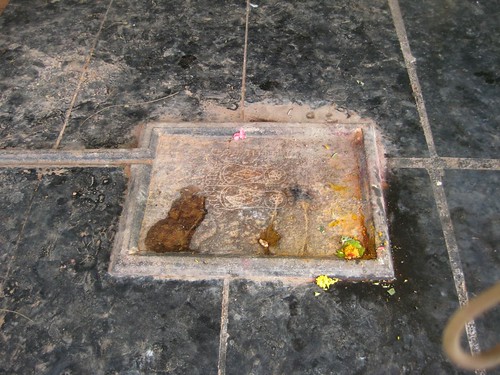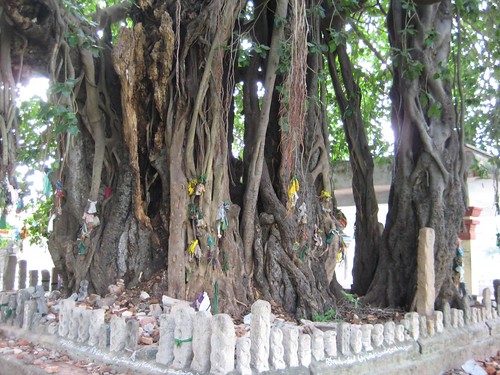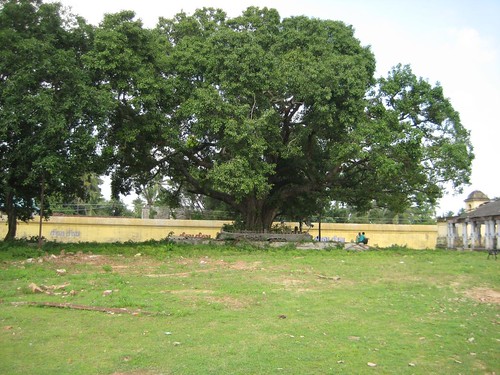Prelude:
It is our belief that we have come
to this world in the form of human beings and that too have taken birth in a
Brahmin family. We call ourselves as Brahmins. Are we Brahmins? Yes, if we
follow the tenets of Vedas and teach others the Vedic principles. If not, we
are like any other living beings. What is the greatness in following the tenets
of Vedas? Vedas are ancient and ever existing and reveals the reality to us
through the direct revelations of many Seers, who have spoken in their language
and now available in the form of Four Vedas, Upanishads, Itihasas, Puranas
etc. All these are giving us the principle of living, the way of leading a
satwic life etc. and at the same time they also show the path to find the
Reality. All these scriptures are directing us to our origin, the Reality,
Brahman, Knowledge or whatever we call it. However, there are certain paths to
tread, certain directions and principles to follow and certain rules and rituals
to be observed if we have to realize the Reality. Why all these restrictions
and demands on us for this?
If you want to get something, you
have to pay for it or struggle to get it by following the prescribed rules and
regulations. If you want a job, you have to agree to the terms and conditions
specified by the company. If you want to possess anything, you have to first
shell out the cost of it as asked by the seller. If you want to go to say
Madras, you have to follow the route to airport, buy the ticket, sit in the
aircraft and go out and search for the place you want to go in Madras. If you
want to be cured of a disease you have to take the prescribed medicine and
follow the instructions given therein for desired result. Unless you make effort
and follow the reules and prescriptions, you cannot achieve anything even in
this mundane world. You follow these rules and prescriptions in order to solve
your worldly problem without any objection. The Vedas proclaim that ultimately,
all that is in the world and the world itself is perishable and impermanent. If
you want to attain the permanent nature, the Bliss, you have to follow the rules
and regulations and teachings contained in the Vedas, Upanishads etc. and
practice meticulously and sincerely with intend to reach your source. All of us
know we are all going to die some time in future and therefore are not
permanent. If you want to know who you are, what is the source of this life
etc., you have to go through a process of learning which is called Tapas,
Meditation etc. , which is hard to practice. The Vedas reveal the Reality and
show the path to reach there with specific rules and directions, which you have
to follow to obtain the desired result. Even as human beings we have to observe
certain disciplines and practices prescribed in Vedas. Brahmins, particularly,
have to learn them and teach others. One of the practices to be followed, as a
Brahmin, is performing our Nithyavruthi which includes Sandhya Vandanam
regularly to not only reach our goal but also to live happily, healthly and
peacefully.
What & Why is Sandhya
Vandanam?
As human beings, we have to be
thankful to Devas – the Gods or the Pancha Bhutas with which we are made of and
the entire world is made of. Even in our body the pancha bhootas are existent –
Earth, Water, Fire, Ether (space) and Air. These are having their lords as
Bhoodevi, Varuna, Agni, Indra and Vayu, who are the preceptors for these
panchabhootas. As we are made up of Panchabhootas, we have to pray to these
lords to give us health, peace, happiness etc. and , therefore, pray to them
daily. The duties enjoined in us towards these devas are called Deva Runam or
debt to Devas.
We have taken birth due to our
Parents and all forefathers, whose grace we have. We have to be thankful to
them for this life and pray to them to give us a pleasamt and useful life. The
duties enjoined towards them are called Pithru Runam or debt to
forefathers..
We have been taught and guided by
our gurus – Not only personal guru but everything in nature, because we have
learnt many things from nature. Ant shows us the principle of united effort,
crow shows us the quality of living by sharing whatever you got, dog shows us
the loyalty principle, cow shows us the virtue of dhaanam, giving out without
expecting anything. Therefore, everything in the nature is in the form of
guru. Towards these we have a debt called Guru Runam or debt to
teacher.
Every day the sun is rising,
reaching the top in sky and setting. These are called Thru Sandhyaas (Three
borders). Sandhi means joining or the midpoint of one state changing into
another. In the morning, the night is off and day is dawning. The point at
which this transformation takes place is called Pratha Sandhya. The sun rises
and comes to the top of our head and comes down. The point at which the reverse
motion takes place is called Madhyaaniikam . In the evening, the sun sets and
daylight is off and darkness sets in. The point at which this transoformation
takes place is called Sayam Sandhya. As per the belief, the sandhi is always
crucial. When one status changes into another,anything may happen due to the
changes taking place in the nature in the Pancha Bhootaas.. It may be positive
or negative, good or bad, harmful or beneficial according to the then condition
in the nature. We have to pray to some super power to make everything happen
positively and good. As these sandhis are due to natural changes, we have to
pray to these three powers – Devas, Pithrus and Gurus – for leading us into
light and give us all happiness and guide us to achieve our aim of realizing our
source. It is, therefore, binding on us to pray and for this prayer each caste
has their own methods. Brahmins have their own method of praying to these
agencies in the form of Thrikaala Sandhyaa Vandanam. Praying on these three
Sandhis explained above in a particular method is called Sandhya Vandanam, where
we give oblations in the form of water and sit and meditate on the Moola Manthra
OM and Gayathri, a discussion on which will take me to a non-ending write-up,
which I do not intend here, nor am I capable of, explaining.
aTo realize our
nature, to get peace and happiness here we have to follow certain rules and
observe certain disciplines and perform certain sadhanas. Nothing will come by
itself. You have to work for it. Our Vedas prescribe that we should live by
sharing with others, serving others, giving to others what we have and yearning
to learn the Truth. This was possible only through Tapas in Krutha Yuga, Yaga
and Yajna in Threthayuga and Pooja and Archana in Dwapara Yuga. These methods
were special to these yugas, which are not possible in the present Kaliyuga. In
Kaliyuga, Karma Yoga, Jnana Yoga, Bhakthi Yoga and Rajayoga are prescribed.
These are all to achieve our goal of getting revelation of the Truth. We, as
human beings, have to first live long with good health, happiness etc. for which
we have to seek the blessings of the super powers.for which Namasmarana or Japa
or prayers are prescribed. Sandhya Vandanam is coming under the category of
prayers for which certain rules have to be followed and certain self-discipline
has to be observed. These are included in Sandhya Vndanam.
How to
perform?:
Here, first we do Sankalpam – means
a declaration by us as to what we want and what we are going to do with first
praying to ganesa, the killer of obstacles and then to Parameswara the Universal
god of destruction to win over obstructions and to Vishnu for sustenance. After
this sankalpa prayer, we are tryinig to caste away all our sins accumulated not
only in this birth but in previous births by oblation in the form of water and
pray for relief from the sins. We then pray that Ganga may purify us and
sprinkle water on us as if we take Ganga Snaanam. All these are done by
chanting appropriate Manthas. Then finally we offer oblations with water to
various forms of Vishnu who has taken various avataaraas and saved the mankind
and world. These oblations we offer with the feeling that we are offering
whatever we hae in this birth unto HIM who has saved the world in previous yugas
through his avataars. We praise his power and seek blessings.
Then we sit and after sankalpam
chant Gayathri Manthra repeatedly as prescribed in our sastras. Before this, we
prepare ourselves for the eligibility to receive the grace of Gayathri by doing
Pranayama with the prescribed Manthra. Before we sit for meditation, prayer
etc. we have to control first our breath, then our Mind and Intellect and subdue
our Ego. Then only we will get concentration on the Manthra we will have to
chant continuously for number of times prescribed. After Pranayama, we are
ready to receive the powerful grace of the God. We chant Gayathri, which is a
Mantra to be chanted with correct meters and mathras and with proper
pronounciation. This manthra reveals the source and also its multifarious
manifestations in the form of 14 lokas (planets), Bur, Buvah, Suva, Maha, Janah,
Tapah, Satyam.(Higher lokas) Athala, Vithala, Sutala, Rasatala, Mahatala,
Pathala (Lower Lokas). The Manthra : OM TAT SAVITHUR VARENYAM BHURGO DEVASYA
DHEEMAHI DHIYOYONAH: PRACHOTAYAAT.
OM (actual pronounciation ad
mathras are AUM) has to be chanted with air held and right from the nabhi.. The
meaning:
That giver of Light (LIFE) which is
immeasurable, permanent, omniscient, omnipresent, omnipotent power, That which
is Superior to all and everything (Super Energy) which activates all devas in
us (limbs, Body, Mind, Intellect etc.), I pray upon for enlightening me and for
guiding me through my intellect.. OM is chanted to mean that we know THAT
Super Power appeared first as Sound in the nature of OM.
Hence, we are praying to the Super
Power through this powerful manthra Gayathri. Each manthra has its devatha or
controller. For Gayathri, the devata is Gayathri Devi and hence the name. It
is told that this is the Manthra which will save us from all sins, guard us
against all calamities and destruction and guide us through the right way of
living in this world.
Significance:
The Sandhya Vandanam
is so important, therefore, to guard against the evils of the Thrisandhya (Union
of Light and Dark etc.) and to give us all prosperity. This is to be done as a
Njithya Karma – daily ritual – and at the appropriate times, i.e. Morning before
the Sunrise (When the twilight is on), in the afternoon when the Sun is exactly
on top of us and in the evening before the Sun sets (exactly at the time of
twilight). KAANAATHE KONAATHE KANDU KADANAI KODU is the proverb we are told by
our elders. First one says before seeing the Sunrise, second one means when Sun
is in straight line ahead and third one means when the Sun is visible just
before setting. The three meeting points of changes in nature are so important
that the Thrikala Sandhya Vandanam is prescribed.
Other religions prescribe similar
prayers in these three times - Muslims do Namaas, Christians pray in church all
the three times, Parsis go to Fire temple and pray etc. etc. This is not only
for Hindus and particularly for Brahmins but in all religions, this principle is
involved in different ways and practices. Brahmins are the givers of knowledge
and they should strengthen themselves to be fit enough to be the guide to
others. This is the duty of Brahmin. Hence this particular method of preparing
oneself through Nithya Karmas inclusive of Thrikala Sandhya Vandanam
prescribed.
Time Factor:;
The Sastras prescribe times to be
observed for the thrikala Sandhya Vandanam with some objective or purpose. It
must have some beneficial effect. First appearance is always good and helpful.
We have to guard against evils and seek good when a thing happens. Therefore,
we have to prepare and seek the guidance prior to the happening. Once the
effect is already on, you cannot change it. You want some money from your
father. When will you ask him? Early morning before his mind is occupied with
other tensions, isn’t it? You want some food. When will you ask your mother?
By noon. If you ask before, the food is not ready and if you ask after lunch,
the food would been fully consumed. There will be nothing to give. So, at noon
you have to ask for it exactly at noon. At night when will you ask your father
for permission to do anything? Just before he goes to sleep. After he sleeps
you cannot seek. Hence, before he sleeps. This is the normal way we seek
something from elders. Also if you do not eat when hungry, but later, what will
happen? Till then you will suffer with hunger and when you eat, you will get
gas formation and acidity etc and will suffer. How long can you hold nature’
call? If you do not attend, it will create some kidney or bladder problem in
course of time. Hence, observing time frame is most important even in
day-to-day life.
Similarly, When Sun rises, he is
soft, less hot and pleasant and before he starts flowing down we should ask so
that he can include our wish in the blessings that he sends. At noon, before
the sun changes his direction from top towards down, so that the effect will be
always positive. Once he starts downward journey the effect also goes down.
In the evening, before the Sun disappears, you have to ask him what you want or
give your oblations so that he will accept it before disappearing. This is the
reason why time is prescribed for Thrikala Sandhya Vandanam and why it is
important to observe strictly the time frame..
Effect for doing without a time
frame:
Now if you do Sandhayavandanam
fully with concentration and correctly but not within the time frame, the effect
for your perfection will be there but because of the delay, the full effect may
not be there. However, there will be effect and blessings – though in a small
measure – even if you do it beyond the prescribed time. In to-day’s condition,
it is not possible to observe the time frame. However, we should perform even
outside the time-frame so that we will have the discipline of performing the
bounden duty and get whatever little effect that is in store. Can you forego
food if you are not able to take in time? How long? What will happen? You
will lose your appetite and ultimately your health. Therefore, it is always
better to perform late than never. This will avoid the negative effect and will
bring whatever little benefit available by performing late.
Direction:
The rules prescribe that the
Sandhya Vandanams should be done facing some specific directions for certain
mantras. In the morning you sit facing East because naturally Sun rises in East
and hence you have to face him while praying. In the after noon he has not
crossed over the upper horizon and is still in the morning horizon. Therefore,
you can face East for Madhyannikam. Some people sit facing North. This is
because Sun is in the Middle – neither East nor West. Hence they consider North
as the Centre point. Well, I am not quite clear here. In the evening, the Sun
sets at West and you have to face him to pray. Here again some people face north
while doing japa while arkyam is given facing west. This is because, even if
Sun is at West by the time we do Arkyam, He would probably have set when we do
japa. Hence, they may be of the opinion that North is common and always good
for Gayathri Japam.. As far as I am concerned, I always face East, East and
West , whatever be the time of performance.
During the Japam, after Gayathri
chanting, we get up and pray – first facing East “MITHRASYA CHARSHANEER
DHRUTHAH”(Morning), Aasathyena Rajasa”
(Noon), IMAM ME VARUNA” (Evening), then facing South YAMAYA DHARMA
RAAJAAYA” and then facing north “RUTHAGUM SATHYAM:” and then facing the original
direction (East or West as the case may be), ‘NAMASSAVITHRE JAGADEGA
CHAKSHUSHE”. The idea in facing different sides is to pray to the corresponding
Gods. East and West you can understand it is to the Sun, South it is to the
Yama Dharma to protect us and to the North to Ganapathy to cut asunder the
obstacles. Also North is the seat of Siva, who is the Iswara to the world. We
naturally pray to him for all prosperity. When you go deep into the meaning, we
will be able to understand more on the purpose.
Conclusion:
By performing Sandhya Vandanam, we
are seeking relief from the sins committed, knowingly or unknowingly from
morning till night, pray for guidance to lead a noble life and to give us
strength to follow our scriptures for which the Sun That which illumines the
entire universe may glow through me and enlighten my limbs so that I can perform
without hindrance my bounden duties. It is not necessary to know the meaning
of each manthra in order to get the desired result. If we follow the meters and
swaras properly and chant the manthras, we will get the effect without knowing
the meaning. But, if one studies the meaning and performs, the satisfaction one
gets will be doubled or manifold. The importance of performing Sandhya Vandanam
need not be overstressed as it is part of us just like our other daily duties.
For non Brahmins and people of other religions also therea re prayers prescribed
for different times, since the effect of sandhi is common and everyone should be
guarded against ill-effects.
ஓம் சாந்தி : சாந்தி : சாந்தி


